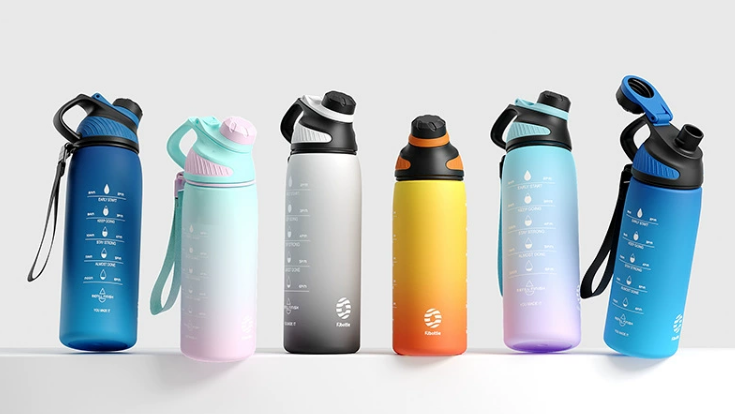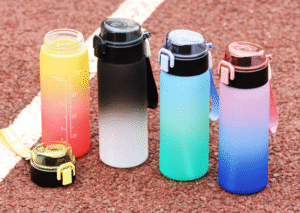Tired of lugging heavy, bulky water bottles on trips? You need something lightweight and reliable that won't break or leak. I'll explain why plastic is often the most practical travel solution.
Plastic bottles are an excellent choice for travel because they are incredibly lightweight, shatterproof, and affordable. They are perfect for carry-on toiletries and for staying hydrated without adding extra weight to your luggage, making them a simple, hassle-free option for any journey.
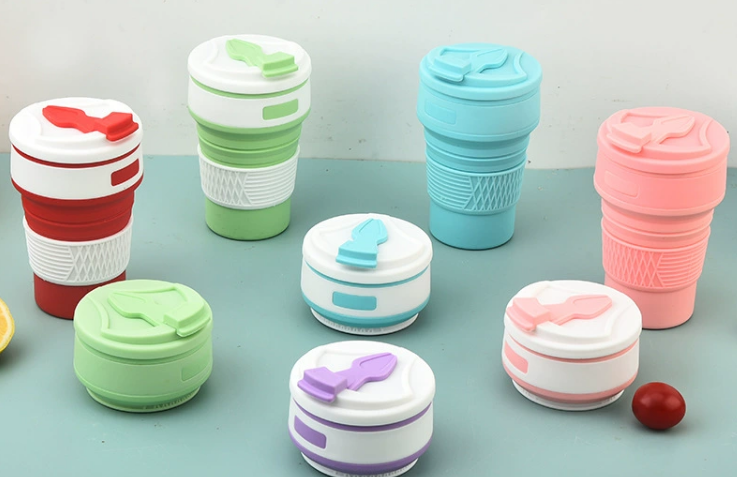
While my business focuses heavily on high-end stainless steel and glass customization, I know firsthand that every material has its place. When I'm traveling, especially by air, practicality becomes my top priority. I've seen beautifully customized glass bottles get broken and heavy steel tumblers get left behind because they were too cumbersome. Sometimes, the simplest solution is the best one. Let's look at the specific rules and reasons why plastic bottles remain a go-to for savvy travelers.
What are the TSA approved travel size bottles?
Worried about having your expensive toiletries confiscated at airport security? It's a frustrating and costly way to start a vacation. I'll explain the simple rule you need to follow.
TSA-approved travel bottles must follow the 3-1-1 rule. Each container must hold 3.4 ounces (100 milliliters) or less. All containers must fit into a single, clear, quart-sized bag. Each passenger is allowed only one of these bags.
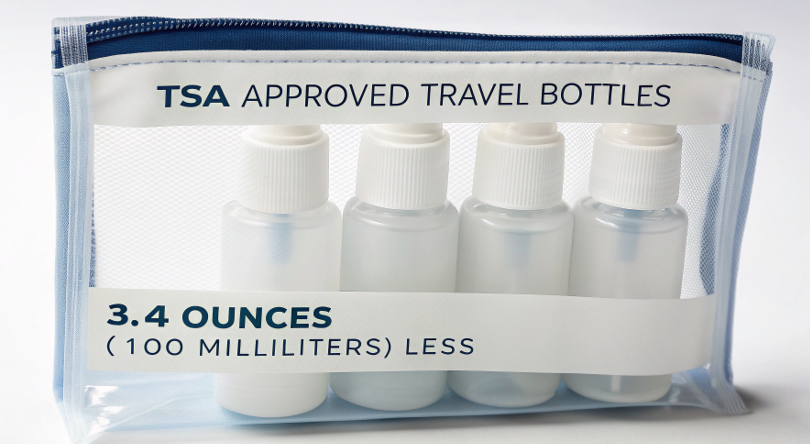
From my experience helping clients design product lines, understanding regulations like these is crucial. The 3-1-1 rule is non-negotiable for air travel in the US and many other countries. I once had a client who wanted to create a luxury travel kit, but their chosen bottles were 4 ounces. We had to pivot the entire design just to comply. The rule is simple but strict. It's not just about shampoo and lotion; it applies to anything that is a liquid, gel, aerosol, or cream. This includes things people often forget, like toothpaste, hand sanitizer, and even certain types of makeup. Packing correctly saves you time, money, and stress at the security checkpoint.
Breaking Down the 3-1-1 Rule
- 3.4 Ounces (100ml) per Bottle:
- This is the maximum size for any single container of liquid. A larger bottle that is only partially full is not allowed. The container itself must have a capacity of 3.4oz or less.
- 1 Quart-Sized Clear Bag:
- All your mini-bottles must fit comfortably inside one transparent, resealable bag. You can't squeeze them in; the bag must close easily.
- 1 Bag per Passenger:
- Each traveler is limited to a single one of these bags.
Here's a quick guide to what you can pack in your carry-on versus what should go in your checked luggage.
| Item Category | Carry-On Bag Example | Checked Luggage |
|---|---|---|
| Toiletries | Shampoo, conditioner, lotion (all under 3.4oz) | Full-sized bottles are fine. |
| Water Bottle | An empty refillable bottle of any size. | A full or empty bottle of any size. |
| Gels & Pastes | Toothpaste, hair gel (all under 3.4oz) | Full-sized tubes are fine. |
| Aerosols | Deodorant, hairspray (all under 3.4oz) | Full-sized cans (with restrictions). |
What is a cheap alternative to plastic water bottles?
Tired of spending money on single-use plastic water bottles? It's bad for your wallet and harms the environment. Let's explore more sustainable and affordable options that are still travel-friendly.
A cheap and excellent alternative to single-use plastic bottles is a reusable BPA-free plastic or collapsible silicone bottle. These are lightweight, durable, and can be refilled for free at airports and hotels, saving you money and reducing waste significantly over time.
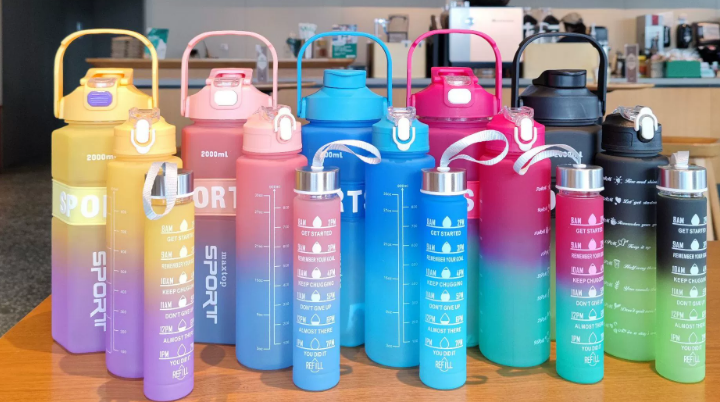
As someone in the custom bottle business, I’m a huge advocate for reusability. The initial cost of a reusable bottle, even a simple one, pays for itself after just a few uses. Think about it: a single bottle of water at the airport can cost $4 or more. A $15 reusable bottle pays for itself before your first trip is even over. The key is to get a bottle that you will actually use. While stainless steel is fantastic, a simple, lightweight BPA-free plastic bottle is often more practical for travel. It won't weigh down your backpack, and you don't have to worry about denting it. Collapsible silicone bottles are another amazing innovation. They can be rolled up to fit in your pocket when empty, saving valuable space in your bag.
Cost-Effective Reusable Options
- BPA-Free Plastic Bottles: These are affordable, widely available, and come in countless shapes and sizes. Look for brands like Nalgene or Contigo that are known for durability. A simple investment can last for years.
- Collapsible Silicone Bottles: These are the ultimate space-savers. They are perfect for minimalist travelers or anyone trying to pack light. They are flexible, leak-proof, and easy to clean.
- A Simple Cup: In some cases, just packing a reusable cup and relying on water fountains can be the cheapest and lightest option of all, especially for short day trips.
Are plastic or silicone travel bottles better?
Trying to decide between plastic and silicone for your travel toiletries? Both are popular choices for carry-on liquids, but they have distinct pros and cons that can affect your travel experience.
Silicone bottles are generally better for thick liquids like conditioner and lotion because their flexible bodies make it easy to squeeze out every last drop. Hard plastic (PET) bottles are better for thin, watery liquids like face toner, as they are less prone to accidental leaks.
![]()
This is a decision I face every time I pack. I’ve learned from experience to use a mix of both. For my thick hair conditioner, silicone is a lifesaver. I can squeeze the bottle and get all the product out, which is impossible with a hard plastic bottle. They are also very durable and can be squashed into a bag without breaking. However, I once made the mistake of putting a very thin face toner in a silicone bottle. The pressure changes during the flight caused a small leak from the cap. Now, I always use rigid PET plastic bottles for my thinner liquids. They provide a more secure seal for watery contents. The best strategy is to match the bottle material to the viscosity of the liquid you're carrying.
Plastic vs. Silicone: Which is Right for You?
| Feature | Hard Plastic (PET/HDPE) | Silicone |
|---|---|---|
| Best For | Thin liquids (toner, micellar water). | Thick liquids (conditioner, gel, lotion). |
| Squeezability | Poor. Hard to get all product out. | Excellent. Very easy to squeeze. |
| Leak-Proofing | Excellent for thin liquids. | Good, but can leak with thin liquids under pressure. |
| Durability | Good, but can crack if crushed. | Excellent. Very flexible and hard to break. |
| Cleaning | Easy to rinse. | Can be harder to clean and may retain odors. |
What type of bottles can you take on a plane?
Confused about which water bottle you're allowed to bring through airport security? The rules can seem tricky, but they are actually very straightforward once you know them.
You can take any type of empty reusable water bottle through airport security, regardless of its size or material. This includes plastic, glass, stainless steel, and silicone bottles. The key is that the bottle must be completely empty when you pass through the security checkpoint.
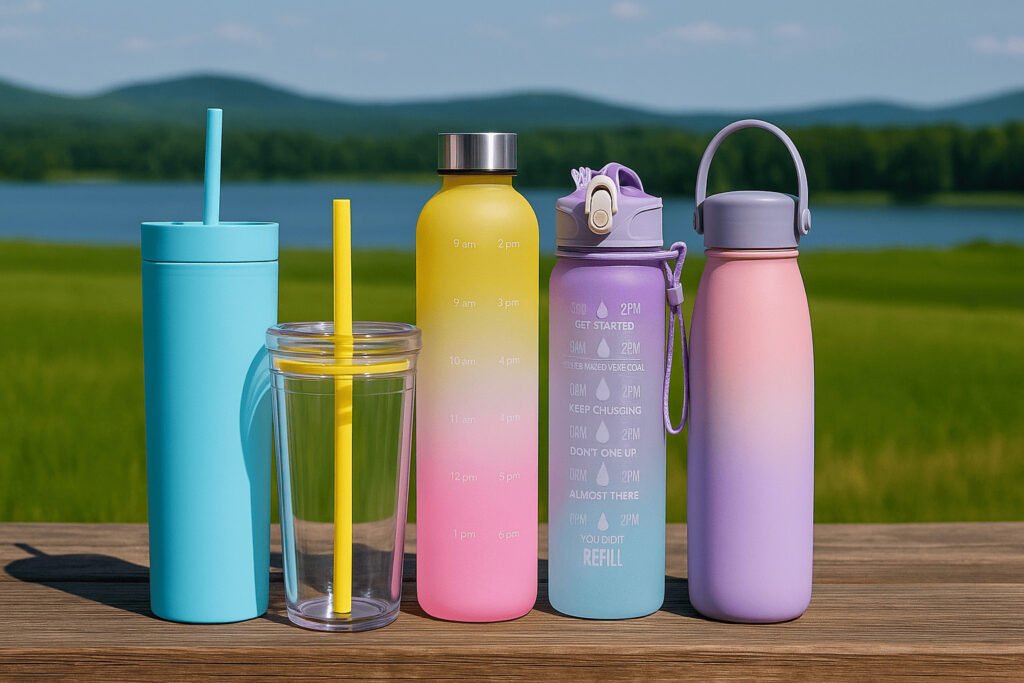
This is one of the best travel hacks that so many people still don't know about. There is absolutely no restriction on the size of your empty water bottle. I always travel with my favorite 32oz stainless steel bottle. I just make sure it's completely empty before I get in the security line. As soon as I'm through, I fill it up at a water fountain or bottle-filling station, which are now common in most airports. This saves me money and is much better for the environment than buying single-use plastic bottles. The same rule applies to any empty container. You can bring an empty travel mug for coffee or an empty shaker bottle for protein powder. As long as it's empty, you can bring it. So, feel free to bring your favorite daily-use bottle with you on your next trip.
Your Guide to Bottles on a Plane
- Empty Reusable Bottles (Any Size):
- Allowed. You can bring your favorite reusable bottle through security as long as it is empty. Fill it up on the other side.
- Full, Store-Bought Bottles (Over 3.4oz):
- Not Allowed. Drinks purchased before security that are over 3.4oz/100ml must be consumed or discarded.
- Full, Store-Bought Bottles (Purchased After Security):
- Allowed. You can buy a large bottle of water, soda, or juice in the terminal after security and bring it onto the plane with you.
Conclusion
For travel, plastic bottles are a lightweight, affordable choice. Remember the 3-1-1 rule for toiletries, and always bring an empty reusable bottle to stay hydrated cheaply and sustainably on your journey.
